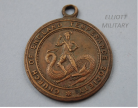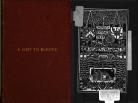19th Century British Literature Timeline
Created by Mary-Catherine Harrison on Mon, 07/25/2022 - 22:24
Part of Group:

A timeline of cultural and literary events related to the long 19th century in British literature.
Timeline
Chronological table
| Date | Event | Created by | Associated Places | |
|---|---|---|---|---|
| 29 Jun 1545 |
Establishment of the First Ever Botanical GardenThe Senate of the Venetian Republic decreed that a suitable plot of land should be purchased for the University of Padova’s botanical garden. These were the origins of Padova’s Botanical Garden, the oldest university garden in the world to have retained its original location and layout over the centuries. This was granted shortly after Francesco Bonafede's request for the creation of a botanical garden was brought to the Venetian Republic back in 1543.Padua Botanical Garden |
Hannah Cunningham | ||
| 25 Jul 1621 |
First Botanical Garden in The UKOxford Botanic Garden is the first botanical garden in the UK. It was founded on July 25th, 1621 when the founding stone of the garden was laid by the University of Oxford's Vice Chancellor. The founder of the garden is the first Earl of Danby, Henry Danvers KG.
|
Hannah Cunningham | ||
| 4 Aug 1725 to 25 Mar 1807 |
John Newton 1725-1807John Newton, a former slavetrader and author of Amazing Grace, reformed in the last few years of his life due to a near-death experience that greatly impacted his spirituality. He ironically had this revalation during a trip with enslaved africans as cargo. It wasn't until years after that he realized how bad slavery was, repented, and then rebelled against it. Newton was the pastor of the church Wilberforce attended as a child. Wilberforce, along with other members of the Anti-Slavery Society, participated in the Slave Trade Act of 1807. In 1785 Wilberforce reached out to Newton and was encouraged to stay within the Parliament. 20 years later, John Newton passed away, at the age of 82. However, because the act took place in March 1807, and Newton passed in December, he was able to experience this step toward greatness. Subsequently, during his time here he wrote many diaries and entries about his time among slavery and what he had witnessed, leaving out the fact that he was a former slavetrader as well. The Diary; Three Centuries of Private Lives lead to the curation of Amazing Grace. |
Alexus Bantom | ||
| 1743 |
Beginnings of the Temperance MovementJohn Wesley, who founded the Methodist Churches, stated that “buying, selling, and drinking of liquor, unless absolutely necessary, were evils to be avoided.” This followed a period known as the “Gin Craze” where the production and consumption of gin skyrocketed in England. This is one of the earlier instances of religious figures vocalizing against alcohol use, which allowed it to gain traction in Britain. |
Kavin Patel | ||
| 1759 |
Founding of The Royal Botanic Gardens, KewOriginally called The Royal Botanic Gardens, Kew, the garden was founded by Princess Augusta of Saxe-Gotha-Altenburg, and her husband Frederick, Prince of Wales who founded the original botanic garden at the Kew estate in 1759. After Frederick's death, she began to find pleasure in developing the gardens. Eventually, the gardens were greatly developed and expanded under Princess Augusta's direction.royalcentral.co.uk: Augusta, Princess of Wales and Kew Gardens
|
Hannah Cunningham | ||
| 1772 |
King George III Inherits the Kew EstateIn 1772, King George III inherited the Kew estate, and joined it with the royal estate in Richmond. Him doing this turned the Royal Botanic Garden of Kew into multiple gardens, making it the Royal Botanic Gardens of KewKing George III is the monarch that most strongly associated with the Kew estate, especially since he spent much of his childhood there. In adulthood, he supported the development of the Royal Botanic Gardens of Kew. In fact, later in his life, George often exchanged ideas with multiple botanists, horticulturalists, and explorers, and he encouraged their innovations. King George III's interest in agricultural developments earned him the nickname 'Farmer George.'www.hrp.org.uk: Kew Palace & George III, The Mind Behind The Mythwww.kew.org: Kew Gardens Surprising Historical Factswww.hrp.org.uk: George III
|
Hannah Cunningham | ||
| circa. 1772 to circa. 1777 |
Slave revolts in Surinam(e)- that was recorded by John Gabriel Stedman in "Narrative, of a Five Years' Expedition Against the Revolted Negroes of Surinam, in Guiana on the Wild Coast of South America; From the Year 1772 to 1777"While Stedman only chronicles 1772- 1777, Slave revolts were common in the region and almost chronic to the colony of Surinam. The treatment in the area was considered notoriously brutal. It's also said that revolts by Maroons were to acquire more goods and to free more slaves. The revolt also included Marron peoples. "Narrative, of a Five Years' Expedition Against the Revolted Negroes of Surinam, in Guiana on the Wild Coast of South America; From the Year 1772 to 1777... Volume 1 (of 2), by John Gabriel Stedman"Stedman came with the role to suppress the rebellion against the Dutch colony. Stedman's preface highlights the perspective he and what he assumes the contemporary reader perceives of the affair. The preface is surprising in comparison to the introduction states that he wants to observe the war truthfully. The Narrative was widely shared to British people, The narrative's preface was written to: from: INSCRIBED, J. G. Stedman. The last sentence in the preface says:
"Let it however not be understood, that I ever laid claim to excellence in writing or drawing; but if the plain and manly truth, so often spoken of, and so seldom found, are of any avail—I presume to hope, that these Volumes are not entirely unworthy the attention of a British Public." (vii) The Book was used in the Abolitionist movement, the reaction to it's publishing in Britan was, " After its publication in Britain, the Critical Review reflected that 'we have never opened any work which is so admirably calculated to excite the most heart-felt abhorrence and detestation of that grossest assault on human nature—domestic slavery' (January 1797). " (British Library). Stedman was introduced to William Blake through Joseph Johnson, an 18th-century Bookseller. Johnson was Blake's benefactor. Johnson's intervention is integral to the commercial success of the Narrative globally. " Through his connections, however, the bookseller could handle all details of publication from choice of paper and type to advertising and wholesale distribution. But more importantly he could exercise the personal interest a patron might take in a protege, offer- ing more than the copyright payment. Of all the booksellers in the second half of the century none surpasses Joseph Johnson for business acumen and literary taste" ( Tyson 1). Content warning: the section shared may be deeply offensive to some readers. Excerpts from Narrative: "At this place I was not a little shocked, to see the captive rebel negroes and others clanking their chains, and roasting plantains and yams upon the sepulchres of the dead; they presented to my imagination, the image of a number of diabolical fiends in the shape of African slaves, tormenting the souls of their European persecutors. From these gloomy mansions of despair, on this day, seven captive negroes were selected, who being led by a few soldiers to the place of execution, which is in the Savannah, where the sailors and soldiers are interred, six were hanged, and one broken alive upon the rack, with an iron [108]bar; besides which a white man was scourged before the court house, by the public executioner, who is in this country always a black." British Library. (n.d.). John Stedman's Narrative of a five years expedition against the revolted Negroes of Surinam, with engravings by William Blake. British Library. Retrieved December 7, 2022, from https://www.bl.uk/collection-items/john-stedmans-narrative-of-a-five-yea... Tyson, G. P. (1975). Joseph Johnson, an Eighteenth-Century Bookseller. Studies in Bibliography, 28, 1–16. http://www.jstor.org/stable/40371608 (1744–1797), J. G. S. (2022, November 29). Narrative, of a five years' expedition against the revolted negroes of surinam, in Guiana on the Wild Coast of South America; from the year 1772 to 1777... volume 1 (of 2). External link. Retrieved December 7, 2022, from https://www.gutenberg.org/cache/epub/65715/pg65715-images.html#ch6 |
Cari Gamlin | ||
| 4 Jul 1776 |
American "Declaration of Independence" IssuedThis document was written by Thomas Jefferson and adopted by The Second Continental Congress. There were twenty-seven colonial abuses that were outlined against King George III. This unanimous declaration of the thirteen colonies enabled them to ally with France and secure their aid against Great Britain. This pivotal formal statement is perceived as the birth of The United States of America. The document itself was a model and inspiration for other areas of the world such as Europe, Latin America, Africa and New Zealand during the 19th century. |
FRANCES M GIACALONE | ||
| 5 May 1789 to 10 Nov 1799 |
French Revolution
On 5 May 1789, the Estates-General, representing the nobility, the clergy, and the common people, held a meeting at the request of the King to address France’s financial difficulties. At this meeting, the Third Estate (the commoners) protested the merely symbolic double representation that they had been granted by the King. This protest resulted in a fracture among the three estates and precipitated the French Revolution. On 17 June, members of the Third Estate designated themselves the National Assembly and claimed to represent the people of the nation, thus preparing the way for the foundation of the republic. Several pivotal events followed in quick succession: the storming of the Bastille (14 July), the approval of the Declaration of the Rights of Man and of the Citizen (26 August), and the march on Versailles that led to the enforced relocation of the royal family to Paris (5-6 October). These revolutionary acts fired the imagination of many regarding the political future of France, and, indeed, all of Europe. The republican period of the revolution continued in various phases until 9-10 November 1799 when Napoleon Bonaparte supplanted the government. ArticlesDiane Piccitto, "On 1793 and the Aftermath of the French Revolution" |
Dave Rettenmaier | ||
| 21 Jan 1793 |
Execution of King Louis XVI
1793 was a key juncture in the revolution, beginning with this execution on 21 January. The increasing violence prompted Britain to cut its ties to France, leading to declarations of war by the two countries. Violence peaked during the Reign of Terror (5 September 1793 – 27 July 1794), which resulted in the execution of the Queen (16 October) as well as of many suspects of treason and members of the Girondins, the more moderate faction that the radical Jacobins brought down on 2 June 1793 ArticlesDiane Piccitto, "On 1793 and the Aftermath of the French Revolution" |
Dave Rettenmaier | ||
| 1794 |
Songs of Innocence and of ExperienceWritten by William Blake The Songs of Innocence was originally etched in 1789, but was combined with additional poems in 1794 as Songs of Innocence and of Experience |
Stacey Kikendall | ||
| 31 Oct 1795 to 23 Feb 1821 |
John Keats' LifeJohn Keats was born in Moorgate London, England on October 31, 1795. He became fully dedicted to writing poetry in 1817, and wrote When I Have Fears That I May Cease to Be in January of 1818. And on February 23, 1821, John Keats passed away in Rome, Italy.
Sources: https://www.britannica.com/biography/John-Keats/The-year-1819 https://en.wikipedia.org/wiki/John_Keats https://erling.yoga/john-keats-isle-of-wight/ https://www.christies.com/features/Joseph-Severn-portrait-of-Keats-11258-1.aspx |
Mohammed Ahmed | ||
| Jan 1801 |
Inclosure Act
ArticlesCarolyn Lesjak, "1750 to the Present: Acts of Enclosure and Their Afterlife" (forthcoming) |
Dave Rettenmaier | ||
| 6 Jul 1801 |
Lord Elgin begins his excavation and removal of the sculptures of the Parthenon to EnglandDisclaimer In this passage, I will be using language such as “acquired” and “acquisition” in order to maintain a neutral stance on the matter of Lord Elgin and the collection of marbles he acquired from the Parthenon. The debate about the ethics of taking artifacts from their homeland and people is a very complicated one. I highly encourage you to read up on the subject and reach your own conclusion about how the acquisition of the Elgin Marbles falls on this debate. I highly recommend watching Chip Colwell’s TED Talk as a starting point to launch your journey into the ethics of possession and repossession within museums: Museums have a dark past, but we can fix that | Chip Colwell | TEDxMileHigh
The Art The Parthenon has stood in Athens, Greece since its construction in the fifth century BCE. The famous marble sculptures within the temple were most likely produced between the years 447BCE and 432BCE, roughly two thousand four hundred and fifty-two years ago. These sculptures depict the triumphs of Greece’s great heroes and gods. The British Museum’s collection includes fifteen of flat, two-dimensional wall reliefs called metopes and seventeen figures and sculptures in varying degrees of intactness.
The Man Thomas Bruce, the seventh earl of Elgin, served as the English Ambassador to the Ottoman Empire from 1799-1803. He spends the first ten years of the nineteenth century removing and shipping Ancient Greek sculptures and art to London. He describes his pillages as necessary to advance and refine English aesthetic and art. It is no secret that the modern Western world reveres and romanticizes Ancient Greek society, art, and academia—the new British Museum’s exterior is based on Grecian architecture, after all. In 1801, Elgin received permission from the current Ottoman authorities in place during the Ottoman occupation of Greece (or claimed that he receives permission, more information on that to come), and so began his excavation and removal of over half the intact sculptures found at the Parthenon. He and his team also removed art from surrounding sites of historical significance, such as the Acropolis. He exhibited these expeditionary trophies as part of his own private collection until the Marbles were bought by the British government. The display of the Parthenon Marbles debuted in 1816, and with the exception of construction in the middle of the nineteenth century, these marbles have been on display in the museum ever since. These sculptures were the inspiration for poet John Keats’s 1816 sonnet “On Seeing the Elgin Marbles for the First Time,” in which he describes the awe-inspiring experience with an emotional depth I’m sure has graced visitors for the last two hundred and six years— “Such dim-conceived glories of the brain/ Bring round the heart an undescribable feud;/ So do these wonders a most dizzy pain,”
The Debate It remains unclear to historians whether or not the actions of Lord Elgin were entirely legal. According to the British Museum’s official trustee statement concerning the matter, they claim before the museum acquired the sculptures in 1816, an extensive investigation on the earl’s actions was conducted to ensure that his legal standing was cleared. Parliament’s vote decided his innocent in any shifty actions. No English investigations have been done since. Though Elgin may have had the permission of Greek and Turkish authorities, some historians worry that the vague language of any diplomatic agreements made between the earl and Ottoman authorities may not clear Elgin’s name after all. On July 6, 1801, Selim III, the sultan who ruled the land upon which the Parthenon stood issued a firman, or royal decree, stating that the Ottoman government would have no problem if Elgin and his expeditioners, “take away some pieces of stone with old inscriptions and figures...” While that was permission enough for Elgin and his crew, some historians interpret this phrasing to mean that the sultan meant for certain sculptures and inscriptions to be taking away only temporarily by the Englishmen so that replications could be produced. Some even argue with the merits of this firman. This is because that the Ottoman authorities occupying Greece at the time never communicated directly with the British government at the time to confirm this agreement. It was Elgin who claimed that the document existed, and Reverend Phillip Hunt, a young clergyman who was a part of Elgin’s excavation team claimed that he had a hard copy of the document but had conveniently left it at home when being interrogated by Parliament. The only physical documents Parliament was ever offered as evidence were copies translated to English, which very easily could have been faked. The actual firman itself, if the document existed at all, has since been lost to history. The current director of the Acropolis Museum Dimitrios Pandermalis claiming that the document issued between the sultan and the earl was not an official firman but more of an administrative letter. The research conducted by the Acropolis Musuem has found that this permit was not even issued to Elgin himself— the document was meant to give Ottoman authorities permission to excavate around the Parthenon. Since Elgin’s artistic treasures first hit English sources, they have been the cause of much debate. However, in recent years, the call that these priceless artifacts be returned to their homeland has increased. Greek authorities and museum professionals continue to seek compromises and agreements with the British Museum, and while this Museum claims it is open to making compromises and listen to requests, they hold that there is nothing inherently wrong with their possession of the Marbles.
This is an important debate to have, as a disturbing number of artifacts in museums all across the Western world have been pillaged, stolen, or cheated out of their homelands. The British Museum itself has an extensive collection of Ancient Greek and Egyptian art— all acquired by the museum during this time when having a hard copy of an issued firman was not of any concern to Parliament. All across the world, objects of religious, spiritual, cultural, historical, and ancestral significance have been taken from the people to whom they are significant. This question, with no right answer, has been plaguing museum professionals for the last twenty years or so—who is the rightful caretaker of an artifact: a museum, where it can be carefully preserved for people to look at it for years to come, or the people who created and revere the object?
Content sourced from: https://www.britannica.com/biography/Thomas-Bruce-7th-earl-of-Elgin https://www.artnews.com/art-news/news/parthenon-marbles-british-museum-restitution-1234605904/ https://www.greece-is.com/news/ottoman-archives-reveal-elgin-took-marbles-illegally-expert-claims/ https://www.newworldencyclopedia.org/entry/Elgin_Marbles#Acquisition https://www.poetryfoundation.org/poems/52305/on-seeing-the-elgin-marbles |
Katherine Mutschler | ||
| 1802 |
William Wordsworth's Lyrical BalladsWilliam Wordsworth's Lyrical Ballads, 3rd edition, containing the expanded and final version of the famous "Preface," one of the founding theoretical statements of the Romantic poetical movement. This image is in the public domain in the United States because its copyright is expired. https://www.abebooks.com/first-edition/Lyrical-Ballads-Pastoral-Poems-Vo... Articles |
Dave Rettenmaier | ||
| The end of the month Winter 1812 to 1857 |
A New Era of StoriesGiving up on their career in law the Grim brothers began pursuing literary research. Although this was a completely different field from their political experience they still approached literature from a thinking of social change. They were unable to relate to the current Romantics of their time and sought out methods of the past and different cultures. They looked towards other cultures traditions from Spain, to Scotland, to Finland, to Serbia, and Scandinavia. They started with folk songs and tales and started to feel the difference in folk literature and poetry was the realism of the human state. They wanted to see fears, and hopes expressed in their writing. On December 20th, 1812 The Grimm brothers published a series of tales called Kinder- und Hausmärchen (House-march-en) which translates to Children's and Household tales, later coined "Grimm's Fairytales". A catalog of oral stories passed through generations based on peoples cultural beliefs. Kinder- und Hausmärchen remains the earliest collection of folktales and gave us classics such as: Cinderella, Little Red Riding Hood, Snow White and The Seven Dwarves, Rumplestilskin, Beauty and The Beast, The Tortoise and The Hare, etc. |
DeJa Spruill | ||
| 1816 to 1821 |
The Creation of Mary Shelley's FrankensteinAt 18 years old, Mary Shelley crafted the idea of Frankenstein while reading, telling, and writing ghost stories with her husband, poet Percy Bysshe Shelley, her step sister Claire Clairmont, their friend Lord Byron, and Lord Byron’s physician, John Polidori, while trapped inside on a rainy day in Geneva, Switzerland in 1816. They were on a vacation at Lake Geneva, and the weather kept them trapped inside for days. To cope with their emotions while confined by the rain, they read horror stories together and found inspiration for their own ghost stories.Thus, the story of Frankenstein was born. The first edition was published anonymously out of fear of backlash on January 1, 1818 in London, but the second edition published in Paris in 1821 contained Shelley's name. The image included depicts the publishing company in London of the first edition of Frankenstein called Lackington, Hughes, Harding, Mavor and Jones. Since then, there have been many publications and iterations of the story, and there have also been numerous film adaptations of Frankenstein.
Sources: Blakemore, Erin. “'Frankenstein' Was Born during a Ghastly Vacation 200 Years Ago.” History.com, A&E Television Networks, 9 Mar. 2018, https://www.history.com/news/frankenstein-true-story-mary-shelley. Exploringlondon. “10 Sites from Mary Shelley's London...5. the Temple of the Muses, Finsbury Square...” Exploring London, 10 Oct. 2018, https://exploring-london.com/2018/10/10/10-sites-from-mary-shelleys-lond.... “Mary Shelley's ‘Frankenstein’ Is Published.” History.com, A&E Television Networks, 13 Nov. 2009, https://www.history.com/this-day-in-history/frankenstein-published.
|
Olivia Vitale | ||
| 22 Jan 1818 to 31 Jan 1818 |
John Keats Writes "When I Have Fears That I May Cease to Be"John Keats wrote When I Have Fears That I May Cease to Be between January 22 and 31 of 1818, lkely on the Isle of Wight. The poem includes imagery of the narrator, who is presumably John Keats himself, standing on a shore, much like he would have on the Isle of Wight. Keats also writes about how while his impending death allows his imagination to run wilder than any other as he looks up at the starry sky, he cannot help but lament the fact that he will never learn any of the greater truths about these celestial bodies. The 19th Century is filled with major advances in astronomy, but Keats never gets to see the discoveries of the asteroid belt, Neptune, spectroscopy, or the Transit of Venus. He passes away only a year after the founding of the Royal Astronomical Society, and the world was robbed of his teeming brain, filled with the desires for knowledge and love.
Sources: https://www.britannica.com/biography/John-Keats/The-year-1819 https://en.wikipedia.org/wiki/John_Keats https://erling.yoga/john-keats-isle-of-wight/ https://www.christies.com/features/Joseph-Severn-portrait-of-Keats-11258-1.aspx |
Mohammed Ahmed | ||
| The start of the month Winter 1818 |
Frankenstein by Mary ShelleyFrankenstein, or The Modern Prometheus was written in 1818 by Mary Shelley when she was only 18. It widely considered one of the first major works in science fiction, and is what set Mary Shelley apart from her famous poet husband Percy Shelley. The story covers heavy themes about the reprecussions of reckless science, which was a rampant fear during that time. The creation of the story is rather interesting, as Mary and her husband were trapped indoors with some friends in Geneva on vacation when she thought of it. While being trapped, the group decided to tell each other scary stories to pass the time, creating both Frankenstein and a short story by one of Mary's friends called The Vampyre. |
Isabella Goolsby | ||
| 16 Aug 1819 to 16 Aug 1819 |
Peterloo MassacreIn the three years leading up to the Peterloo Massacre, members of the working-class repeatedly tried and failed to convince their government to improve their standard of living. The most prominent demand was to repeal the Corn Laws. Marches and gatherings were often "dispersed without injury" and petitions were rejected entirely. From the beginning of 1819, mass meetings were becoming more frequent. In response, "the government worked to find a legal justification for the magistrates to send in troops to disperse a meeting when riot was expected but not actually begun." In the end, approval was given privately, rather than officially, to turn to military action if needed and then receive forgiveness after the fact. After being delayed for two weeks, a crowd of about 60,000 people from the surrounding region met in St. Peter's Square. Shortly after 1pm, the order was given by the local magistrate to arrest Henry Hunt, the main speaker at the meeting. The first death of the massacre was that of a two year old child who was knocked out of his mother's arms by a rushing horseman on his way to deliver the warrant. About 40 minutes later, the first of the cavalry made their way into the crowd to arrest the speakers, got stuck, and subsequently bagan hacking at the crowd with sabers. Eventually, this turned into indescriminate "dispersal" of the crowd through force of violence. Modern estimates hold that between 11 and 18 people were killed and over 600 wounded. |
Alex Popp | ||
| 12 Jan 1820 |
Founding of the Royal Astronomical SocietyA meeting held between the founding 14 members of the Royal Astronomical Society, including Charles Babbage and John Herschel at the Freemasons' Tavern. The first president of the society, Frederick William Herschel, never actually took the chair in any meetings.
Sources: https://www.rmg.co.uk/stories/topics/astronomy-19th-century |
Mohammed Ahmed | ||
| 29 Jan 1820 |
Death of King George IIIKing George III died on January 29th, 1820. The first official meeting of the Royal Astronomical Society was moved from February 8th to February 24th to respect his death. |
Mohammed Ahmed | ||
| 24 Feb 1820 |
First Official Meeting of the Royal Astronomical SocietyThe first official meeting of the Royal Astronomical Society was held on February 24th, 1820. It was moved from its original date of February 8th to respect the death of King George III.
Sources: https://www.rmg.co.uk/stories/topics/astronomy-19th-century |
Mohammed Ahmed | ||
| 1833 |
Joseph Livesey Founded the First Temperance HotelJoseph Livesey was an advocate for temperance, a politician, social reformer, and writer. Temperance hotels essentially provided the same amenities as a regular hotel, except for the alcohol. This was an early attempt by Livesey to spread abstinence, which would become a popular aspect of 19th Century England and would result in the formation of temperance hotels in Scotland and other places across Britain. |
Kavin Patel | ||
| 1833 |
Philadelphia Female Anti-Slavery SocietyThe Philadelphia Female Anti-Slavery Society was established in 1833 by William Lloyd Garrison. An interracial group of abolishinists, the PFASS consisted of well-known female figures such as Lucretia Mott, Lydia White, Esther Moore, and Sidney Ann Lewis. These women are outstanding, not only because of their contributions to the abolishinist movement, but also because of the work they did in aiding the development of American feminism. The contributions of the PFASS are many, but one that must be mentioned is the support the PFASS provided in the publication of many important anti-slavery literature such as Angelina Grimké's "An Appeal to the Christian Women of the South", published in 1836. The group's work regarding anti-slavery petitions in Washington is also notable. "The Anti-Slavery Alphabet", as explained in the gallery exhibit, was written and published to be sold in the Anti-Slavery Fair in Philadelphia, in order to raise money for the abolitionist movement. Image: https://upload.wikimedia.org/wikipedia/commons/f/fa/AntiSlaverySocietyMarker.JPG |
Mahnaz Seddiqi | ||
| 1837 to 1840 |
ChartismChartism was a British working class reform movement that emerged amid the economic depression between 1837-1838. The name comes from the People’s Charter, a bill drafted by a radical in London named Willian Lovett in 1838. The People’s Charter had six demands, universal manhood suffrage, equal electoral districts, vote by ballot, annually elected parliaments, payments of members of Parliaments, and abolition of property qualifications for membership. William Lovett was a secretary and one of the original founders of an organization called the London Working Men’s association, an organization created in 1836 that primarily appealed to skilled laborers and championed for general education. The organization also aligned itself with Owenite Socialism, a form of utopian socialism named after British social reformer Robert Owen. The core philosophy in which Owen’s essays, “ A New View of Society; or, Essays on the Principle of the Formation of the Human Character,” is based on is the belief that human character is formed by circumstances over which individuals have no control.” The Chartist movement wasn't very successful, in 1839 A Chartist convention had met in London in February to prepare a petition to present to Parliament. “Ulterior measures” were threatened should Parliament ignore the petition, but the delegates disagreed on how much militant action should be used and the convention failed. Later that year in May the movement had moved to Birmingham where riots had led to the arrest of the movement's leaders William Lovett and John Collins. In the following month the convention returned to London and presented its petition in July which Parliament had rejected. This was followed in November by an armed uprising of Chartists at Newport, which was quickly suppressed. Its principal leaders were banished to Australia, and nearly every other Chartist leader was arrested and sentenced to prison. The Chartists then started to organize under more moderate tactics. Three years later a second national petition was presented achieving more than three million signatures, but again Parliament refused to consider it. The movement began to lose momentum in the 1840s as the economy had started to return. Source: https://www.britannica.com/biography/Robert-Owen#ref5434 |
Larry Blicharz | ||
| 1840 |
Kew Gardens Becomes a National Botanic GardenIn 1840, The gardens became a national botanic garden, and Kew Gardens became a center for scientific research and the international exchange of plant specimens. Since the gardens became a national botanic garden, the name was changed from 'The Royal Botanic Gardens of Kew' to 'Kew Gardens.' Under Kew’s director, William Hooker, the gardens were increased, and by the early 20th century the grounds were expanded to the present size of 300 acres.www.historyhit.com: Kew Gardens |
Hannah Cunningham | ||
| The start of the month Winter 1843 to The end of the month Winter 1843 |
Charles Dickens Publishes "A Christmas Carol"Charles Dickens was born in 1812 and grew up in poverty himself with a family that was victim to debtor's prison, which was a prison for those who could not pay their debts in the 19th century. He was forced to drop out of school and work in a factory at a very young age of 12. He has become a very successful author of numerous Christmas novels with "A Christmas Carol" being one of the most iconic and well-known, especially in today's industry as it is a popular play, has been made into different novel adaptations, and numerous movies. It was published on December 19th, 1843 and was sold out by Christmas Eve. Although Dickens could have made a large sum of money, his profit was deducted due to his devotion for adding details and perfection in the design of his books (how the book was bound together, endpapers, overall materials, etc.). "A Christmas Carol" focusses on the main character, Ebenezer Scrooge, who hates Christmas and overall is an unpleasant person. He is an owner of a business in a Cornhill warehouse where he was business partners with Jacob Marley. Jacob Marley was also known to be an insensitive and hated man: "Scrooge was his sole executor, his sole administrator, his sole assign, his sole residuary legatee, his sole friend, and sole mourner" (Dickens 1). Marley's ghost visits Scrooge one night and warns him that he will be visited by three ghosts/spirits that will teach him how to become a better person and care about others, especially during the Christmas season. Marley warns that if he doesn't learn from the three ghosts which include the ghost of the past, the ghost of the present, and the ghost of the future, then he will die in chains with each link representing a time where he was a horrible human being to others. In Jacob Marley's death, he returns as a ghost to fulfill his quest to help Scrooge before it’s too late for him like it is for Jacob. By transporting readers through the past, present, and future, they are invited on a journey to understand the reason Scrooge is the way he is and witness a change in Scrooge as each spirit teaches him to learn from the past, live in the present, and fear the future. The first spirit is of the past and is described as having a glow appearance, similar to a candle, and represents the mind or memory: “But the strangest thing about it was, that from the crown of its head there sprung a bright clear jet of light, by which all this was visible” (Dickens 27). The first spirit takes him to his old boarding school where his father abandoned him. It also depicts his relationship with his younger sister who was sick but he loved her so much. Readers then witness his old boss Fezziwig who is a kind employer but Scrooge’s greed lead him to work for Marley. There is also a glimpse of Belle, his ex-fiancé, whom he loves and she loves him but he loses her because he is so consumed in making money. Similar to Mary Barton displaying Esther's reasons for being a prostitute or John's background of being a murderer, Scrooge's upbringing is used as a transportation tool to ask the question of why? He then meets the second spirit which is that of the present which is described as the Christmas spirit filled with joy, generosity, compassion, and kindness: “and on its head it wore no other covering than a holly wreath, set here and there with shining icicles. Its dark brown curls were long and free; free as its genial face, its sparkling eye, its open hand, its cheery voice, its unconstrained demeanour, and its joyful air” (Dickens 46). On this trip, he is transported to the house of the Cratchits where even though they live in such poverty due to Scrooge underpaying the father, they still thank him for what they have. He also witnesses Tiny Tim, one of Cratchit’s children, who is ill. A common theme observed in the Victorian era is using children as an innocent display of sympathy. The ghost of Christmas present then transports him to his own nephew’s house where even though every person scoffs when they hear his name, his nephew vouches for him and claims that he loves him. The final spirit is the ghost of the future who represents fear, darkness, hopelessness, and death. He shows Scrooge his outcome at his own funeral where people celebrate his death, dance on his coffin, and he has his things taken for him which are all disrespectful acts for a corpse. This spirit didn’t speak at all and “Scrooge feared the silent shape so much that his legs trembled beneath him” (Dickens 68). He is also taken to Tiny Tim’s grave where he realizes that he could have prevented his death if he paid the Cratchit family what they deserve so he could get cured. The appearance of this ghost is described as “shrouded in a deep black garment, which concealed its head, its face, its form, and left nothing of it visible save one outstretched hand” (Dickens 68). While Scrooge develops empathy for those around him, readers also empathize with Scrooge and advocate for his change in perspective. Charles Dickens used Scrooge's characterization and storyline to stage an apparatus that critiques society's politics, especially during the Victorian era, and extends compassion from those in power to those in poverty. While Dickens' childhood catalyzes this storyline, it is also evident that many of Dickens' experiences as a child parallel with that of Scrooge's, for example, both men have a father in debtors prison and both had to work to support their families beginning at a very young age. The social problems of Britain in the 19th century highlighted poverty in various parts of London which Charles Dickens witnessed as a result of moving around a lot. When the British empire expanded as Queen Victoria took the throne, the impacts of the industrial revolution had been made clear. With high levels of crime and overcrowded/poor working conditions, many people were subject to poverty. Although The Poor Law in 1834 tried to address this issue, it was discovered that it just further punished those in need of labour. Dickens cleverly introduces these issues of social injustice within his novel using not only a ghost story represented in 5 staves (Marley’s ghost, the ghost of Christmas Past, the ghost of Christmas present, the ghost of Christmas future, and the happy revolution) but he used the season of Christmas to create vivid imagery and relatable characterization. While Scrooge’s final realization is that he doesn’t want people to celebrate his death and he wants to save Tiny Tim, he pleads that he will honour Christmas and change his ways from now on. Scrooge states, “I will honour Christmas in my heart, and try to keep it all the year. I will live in the Past, the Present, and the Future. The Spirits of all Three shall strive within me. I will not shut out the lessons that they teach. Oh, tell me I may sponge away the writing on this stone!” (Dickens 83). Dickens, Charles. “Charles Dickens’ Christmas Books Including 'A Christmas Carol'.” July 1998, Oxford, Oxford University Press. |
Selina Hakim | ||
| 23 Sep 1846 |
The Discovery of NeptuneThe mathematicians John Couch Adams of England and Urbain Jean Joseph Leverrier of France both individually concluded that there should be another planet in the solar system using calculations based on the orbit of Uranus. Adams attempted to confirm his hypothesis by contacting the Royal Observatory and Cambridge, but both were unsuccessful. At the same time, Leverrier contacted Johann Gottfried Galle of the Berlin Observatory. Using their refracting telescope, Galle and his student Louis d'Arrest discovered Neptune on 23rd September 1846.
Sources: https://www.rmg.co.uk/stories/topics/astronomy-19th-century |
Mohammed Ahmed | ||
| May 1850 |
George Frederick Watts exhibits "The Good Samaritan," inspired by Thomas WrightThe painter George Frederick Watts exhibited The Good Samaritan in the 82nd exhibition of the Royal Academy of Arts in 1850. The painting was inspired by the Manchester prison philanthropist Thomas Wright. Later novelist Elizabeth Gaskell was part of a successful plan to purchase the painting for the city of Manchester, where it is now part of the permanent collection of the Manchester Art Museum.
|
Mary-Catherine Harrison | ||
| 1851 |
'Disappearances by Elizabeth Gaskell and the Detective Police Controversy'Disappearances' was a short essay first published by Elizabeth Gaskell in the June 1851 publication of Charles Dicken's journal, Household Words. The essay explored the disappearances of 6 men throughout the nineteenth century and how their stories could have played out differently if the London Detective Police was formed earlier. While Gaskell acknowledges the skills of the new Detective Police, she coherently addresses the concerns she has over the type of change they will constitute in the political sphere, as well as in literature. She brings to discussion the large controversy of public policy and the proper scope of police work, and questions whether they will bring justice or injustice. Furthermore she questions how they will impact the idea of private and public spheres in society; both in reality and fiction. The London Detective Police were formed in the early 1840's. While the regular division was focused on preventing crime, the new detectives worked all hours ( in and out of uniform) to detect crime. Their formation was direct rusult of criticism from the public on the lack of results the normal police force had in solving murders. The new branch of police became a popular topic in terms of how public policy was handled. While the Detective Police solved many notorious cases, they were also met with scandel and concern. The working-class believed that the new branch worked to only serve the upper class and even the middle class, ultimately fueling concerns about accountability and proper justice. Large debates over their impact on individual liberty and privacy started to grow as well. While society clearly had differing opinions in regards to the Detective Branch, it is well known that Charles Dicken's was enamoured by the idea of solving crime and having a speciefied group to carry out such tasks. He dedicated a lot of his later work to detective and crime related subjects and furthermore helped to establish what we know today as the 'detective novel' that ends with the solving of a crime. The London Detective Police Branch was ultimately disbanded in 1878 due to corrupt accusations and scandels, resulting in the Crime Investigation Department (CID), which is still in practice today.
In recent studies of Gaskell's 'Disappeances' scholars seem to find little clarity or common ground on what they believe her purpose was in writing on such a controversial topic of the time in a journal managed by Dickens, who was infatuated with the improvement being made by the newly formed Detective Police. While upon first look a reader would see Gaskell's appeciation for the new force, upon a deeper look one would see the ironic judgements. Towards the end of the essay Gaskell states, "Once more, let me say, I am thankful I live in the days of the Detective Police; if I am murdered, or commit bigamy, at any rate my friends will have the comfort of knowing all about it," semmingly referring to the idea that everyone is to know your business if there is no privacy. It largely is believed that Gaskell used 'Disappearances as a exploratory narrative to the changing world of literature in the mid-ninteenth century. The mixed signals in opinion produced by the text seems to insinuate the change that Detective Police is bringing to narrative and mystery in literature. Scholars seem to particularly draw these conclusions by two works that followed 'Disappearances', both being short political-mysteries; "The Manchester Marriage" and "Right at Last". Ultimately, the piece remains a mystery itself! http://nmi.org/wp-content/uploads/PublicDomain/Disappearances.pdf https://www.smith.edu/libraries/libs/rarebook/exhibitions/dickens/8-hous.... https://www.jstor.org/stable/48518794?seq=6#metadata_info_tab_contents https://www.bl.uk/romantics-and-victorians/articles/the-creation-of-the-... https://rylandscollections.com/2021/02/08/placeholder-gaskell-and-dicken...
|
Erin Letourneau | ||
| 1862 to 1873 |
The Church of England Temperance Society is FormedThe Church of England Temperance Society was founded in 1862 under chairman Archbishop Tait and was reconstituted in 1873. The organization strived to lobby against alcohol use and promoted total abstinence. The Church gained a substantial following of 200,000 members across 7,000 different branches. The organization would later join with the National Police Court Mission to form The Church of England Council for Social Aid in 1969. |
Kavin Patel | ||
| 1862 |
Les MisérablesIn 1862 Victor Hugo Published the book Les Miserable. This novel is considered to be one of the longest ever written with 48 books and 350+ chapters. This novel was very important for its time period and was considered one of the greatest ever written. |
Jacob Yasso | ||
| 1876 |
Founding of The British Women’s Temperance AssociationThe BWTA aimed to educate the public about the effects of using tobacco, alcohol, drugs, and even gambling. One of the ways in which the BWTA would impede alcoholism is by creating public water fountains next to bars or places that served alcohol to provide an alternative. Later on, the organization would also establish treatment centers for women who had alcohol issues as they saw a rising trend in inebriated women. |
Kavin Patel | ||
| 6 Apr 1886 to 3 Jan 1887 |
A Visit to Europe-Troilokyanath MukhopadhyayIn 1886, renowned Bengali author T.N. Mukharji was selected by the Government of India to assist in the curation of the "Indian Empire" display within the Colonial and Indian Exhibition that was to be held in the South Kensington Museum in London. The Colonial and Indian Exhibit of 1886 was held by the Prince of Wales in order to showcase the elite power of the British Empire. During his visit to Europe Mukharji developed a travelography which recorded his personal experiences while in Europe. The travelogue acts as social commentary on the ignorance held by British citizens, and the strange misguided interest many of them have in cultures outside of their own. While upholding a high level of respect for the British Empire Mukharji did not shy away from expressing areas of concerns he found within London. Due to his education Mukharji was able to comment on the disparities between India and Europe. He takes notice that the demeanor exhibited by Europeans traveling outside of their country is vastly different than how they presented themselves when back home. He noted that the Europeans he previously encountered in his life often exuded a disposition of entitlement and "false imperialisms", which many perform under the guise of religious observance. Mukharji stated "London is the city in the center of the earth" since it acted as the central point of commerce internationally. Although he played a large role in the curation of the "Indian Empire" exhibit he couldn't help but feel somewhat embarrassed by its display. He takes note to how fascinated visitors were and being able to witness artifacts and visitors from the East, which included Mukharji who was not exempt from heavy stares even though he himself was not part of the exhibit. He discusses the astonishment many visitors had when realizing that India had produced great technological advancement worth of being recognized just as much as British engineering. Although being recognized as part of the empire during his visit, Mukharji always separated himself from his host, and remains centered in his "native" depiction that he knows he and those outside of the country are labeled under. He discusses how unlike India, other countries such as China and Japan had already broken from the mold of being considered "native" and held a great voice and power in regards to international commerce and their relationship with the empire. The journal focused deeply on the intricacies of the exhibition, and by doing so explained the socio-economic status of India. Mukharji openly condemns London for attempting to hide their misdeeds and colonization of other countries under the false pretenses of friendship and mutualism. Source: A Visit to Europe |
Lula Taylor | ||
| Jul 2003 |
Kew Gardens is Added on the UNESCO list of World Heritage Sites by UNESCOIn July of 2003, UNESCO added Kew Gardens onto the list of World Heritage Sites. The UNESCO World Heritage Convention defines World Heritage Sites as ‘places of Outstanding Universal Value to the whole of humanity’. UNESCO acknowledged the value of the gardens unique history, diverse historic landscape, rich architectural legacy, botanic collections, and position as one of the world’s leading botanic gardens for scientific research and education.www.kew.org: RBG Kew World Heritage Site Management Plan (This is a pdf) |
Hannah Cunningham |

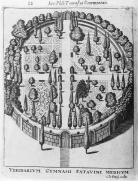


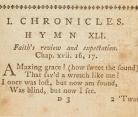
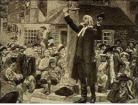

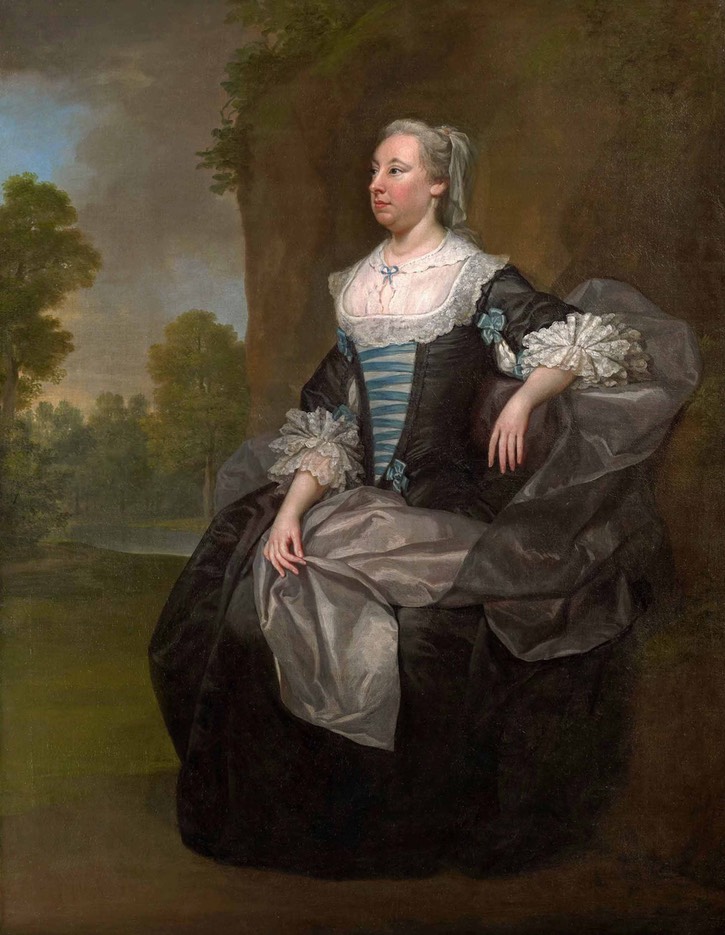
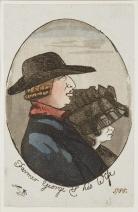
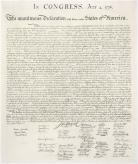

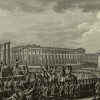

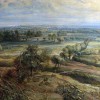

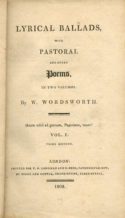



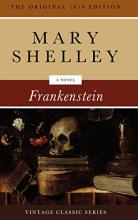



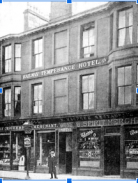


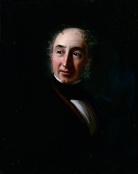
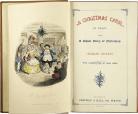
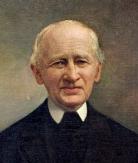
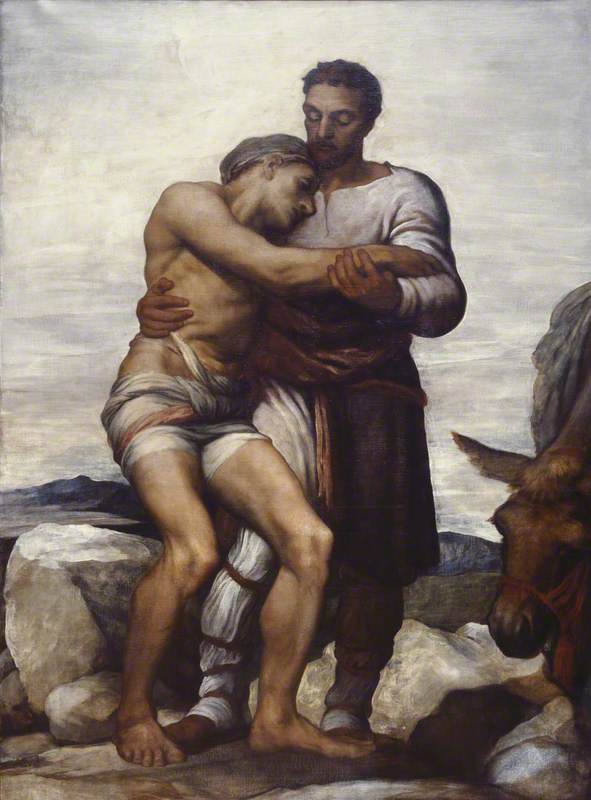

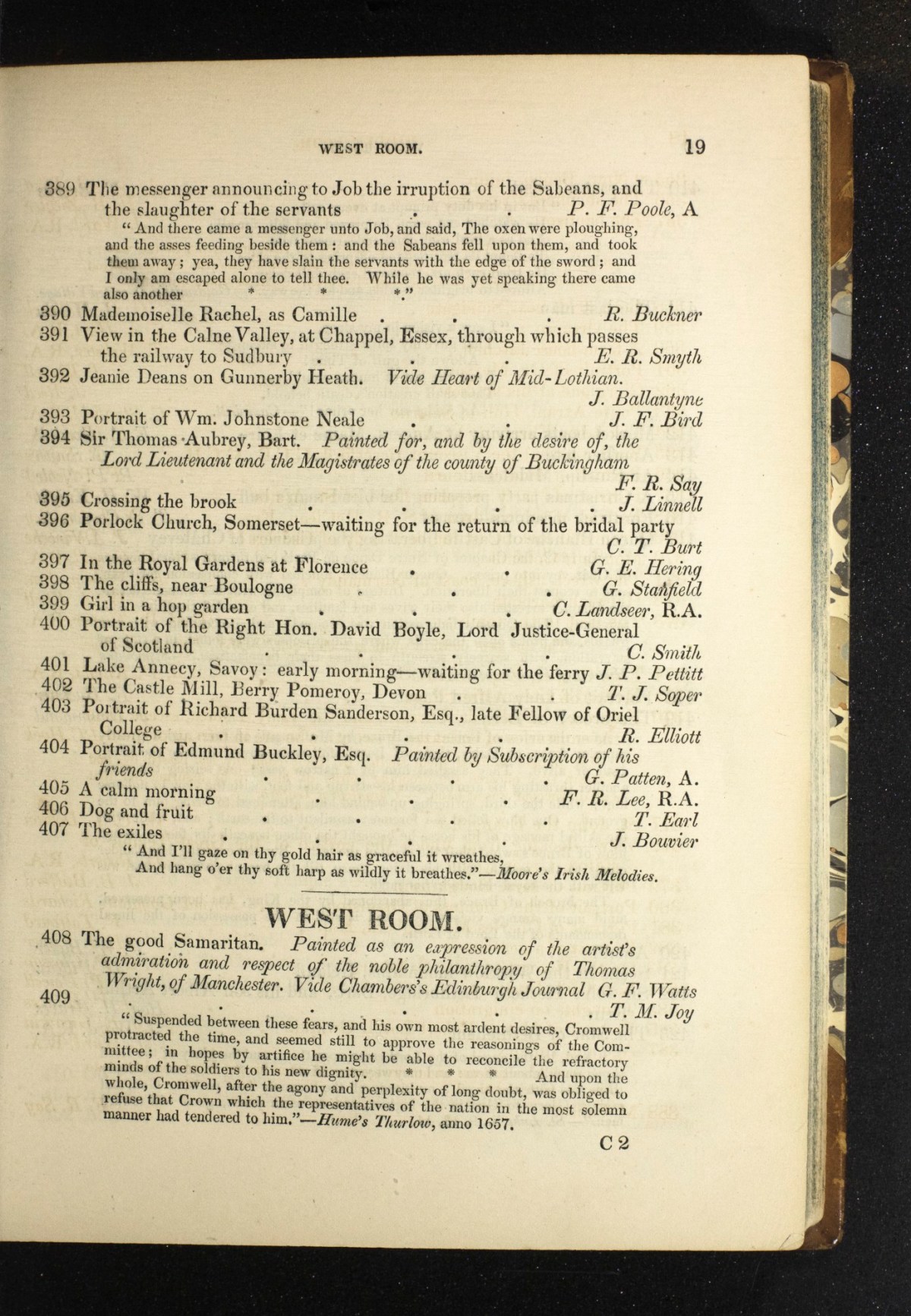

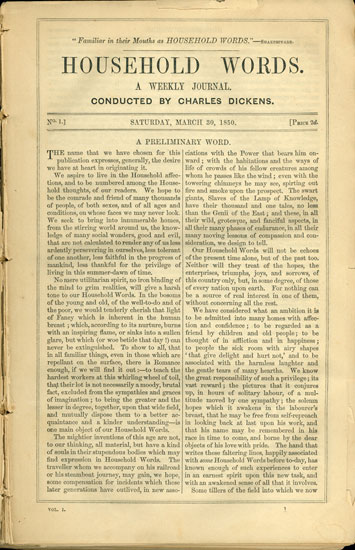
![Front page of the Illustrated Police News, 25 June 1870 [page: 1] Front page of the Illustrated Police News, 25 June 1870 [page: 1]](https://www.bl.uk/britishlibrary/~/media/bl/global/dl%20romantics%20and%20victorians/collection-items-more/i/l/l/illustrated-front-c13470-60.jpg?w=1920&h=1280&hash=F7CD9ED0AACED8D09680C0092B6E96CD)
